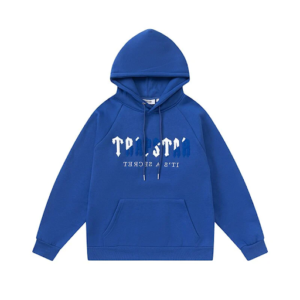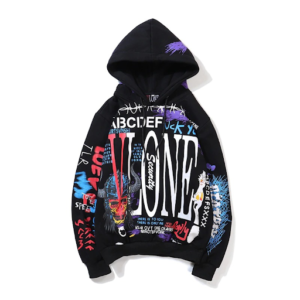Von Dutch, a name once inseparable from mid 2000s mainstream society, is a brand that re-imagined easygoing style through its notable plans and relationship with superstar culture. Known essentially for its trucker hats embellished with the strong “Von Dutch” logo, the brand turned into an image of disobedience, distinction, and the extraordinary mix of high and low design. In any case, behind the popularity and gaudy plans lies a more profound story, established in American subculture, custom workmanship, and the tradition of those who never looked for the spotlight: Kenneth “Von Dutch” Howard.
The Origins: Kenneth Howard, aka Von Dutch
The name “Von Dutch” follows back to Kenneth Howard, a flighty craftsman and repairman from Southern California who rose to conspicuousness during the 1950s and 1960s as an expert pinstriper and custom vehicle craftsman. Howard, whose epithet “Von Dutch” was a sign of approval for his German heritage and his famously difficult character, was a compelling figure in the realm of speedsters and cruisers. His freehand pinstriping, a type of complex linework applied to vehicles and bicycles, was progressive, adding a creative pizazz to the universe of car customization.
Howard’s craftsmanship wasn’t simply embellishing; it was emblematic of a bigger development — a defiance to large scale manufacturing and the similarity of the post-war American way of life. His plans, which included dreamlike and now and again spooky pictures like his well known “flying eyeball” logo, exemplified the nonconformity soul of independence and dissension.
In spite of his monstrous ability, Howard avoided the possibility of commercialization. He saw his specialty as unadulterated and opposed endeavours to transform it into an item. Unexpectedly, it was after his demise in 1992 that his name and inheritance were changed into a worldwide design brand that he could have opposed throughout everyday life.
From Hot Rod Culture to Fashion: The Birth of the Von Dutch Brand
After Howard’s passing, his name and licensed innovation were gained by money manager Ed Boswell and later offered to business visionaries Michael Cassel and Robert Vaughn. They saw a potential chance to turn Von Dutch’s novel, insubordinate tasteful into a design mark that mirrored a similar mentality as Howard’s work of art. In this way, the Von Dutch brand was conceived, and it immediately built up momentum in the realm of streetwear.
What compelled the Von Dutch brand to stand apart wasn’t simply its association with custom vehicle culture yet the manner in which it imbued Howard’s nonconformist ethos into wearable plans. The striking “Von Dutch trucker hat” logo turned into an image of a lighthearted, defiant demeanour, mixing workmanship, design, and American subculture in a way that had never been finished.
The Celebrity Explosion: How Von Dutch Became a Fashion Phenomenon
While the Von Dutch brand at first engaged specialty crowds acquainted with speedster and custom vehicle culture, it wasn’t some time before it detonated into standard cognizance. The mid 2000s denoted when superstar culture and design were turning out to be inseparably connected, on account of unscripted television, paparazzi culture, and the ascent of streetwear. Von Dutch turned into the go-to mark for superstars who needed to project a relaxed at this point restless picture.
The brand’s trucker hats turned out to be especially notable. Made with froth fronts and cross section backs, these hats highlighted the larger than usual Von Dutch logo and were worn by the greatest stars of the period, including Paris Hilton, Britney Lances, Ashton Kutcher, and Justin Timberlake. These superstars, frequently hattured wearing Von Dutch hats during their day to day exercises, launch the brand into the worldwide spotlight.
The hat, which had once been an unassuming common frill, turned into a high-design thing. Its prosperity was to a great extent because of the manner in which it rode the line between relaxed wear and high-profile style. Von Dutch clarified that the brand wasn’t about complexity — it was about strength, opportunity, and a dismissal of customary design standards.
The Symbolism of Von Dutch: Rebellion and Pop Culture
Von Dutch wasn’t simply one more dress brand; it represented a bigger social shift that was occurring in the mid 2000s. The brand’s ascent matched with the developing ubiquity of streetwear, a design development that consolidated components of athletic apparel, workwear, and nonconformist style into a strong and intense stylish. Streetwear was about independence and dismissing the cleaned, top of the line design advanced by extravagance brands.
Von Dutch impeccably fit this shape, with its underlying foundations in the coarse universe of speedsters and its relationship with the underground rock ethos of doing things your as own would prefer. Wearing Von Dutch wasn’t simply a style decision — it was an approach to conforming to a lighthearted, defiant mentality, one that dismissed pomposity and embraced uniqueness.
Simultaneously, Von Dutch was likewise embraced by standard culture, which added a layer of incongruity to its prosperity. The way that a brand brought into the world from an enemy of business, underground craftsmanship development turned into the dear of Hollywood famous people mirrored the manner in which design frequently obscures the lines among subculture and the standard.
The Downfall: Overexposure and Changing Tides
In spite of its brilliant ascent, Von Dutch’s predominance in the style world was fleeting. By the mid-2000s, the brand had become so omnipresent that it lost the feeling of selectiveness that had at first made it cool. Knockoff forms of Von Dutch items overflowed the market, and the oversaturation of the brand prompted a quick decrease in its notoriety.
As style moved towards additional moderate and refined styles, the boisterous, logo-weighty tasteful that Von Dutch supported started to feel obsolete. The trucker hat, when an image of insubordinate coolness, was recently viewed as a remnant of the mid 2000s, related with a former period of over-the-top superstar culture.
The Resurgence: Y2K Nostalgia and Von Dutch’s Revival
Lately, notwithstanding, Von Dutch has encountered a resurgence, because of the restoration of Y2K design and the developing pattern of nostalgic dressing. As more youthful ages look to the mid 2000s for motivation, the striking logos, showy plans, and lighthearted mentality of Von Dutch have become popular by and by. One of a kind Von Dutch things, especially the sought after trucker hats, are currently profoundly pursued by style lovers hoping to take advantage of the soul of the period.
Von Dutch, the brand, has embraced this restoration, reissuing a portion of exemplary plans and sending off new assortments to give recognition to its mid 2000s prime. While the brand may never again be at the level of its unique ubiquity, its effect on design is evident, and its heritage as an image of Y2K culture serious areas of strength for stays.
Conclusion: Von Dutch’s Lasting Impact on Fashion
Von Dutch is something other than a brand — a social peculiarity typified a particular crossroads in design history. From its underlying foundations in the defiant universe of custom vehicle workmanship to its ascent as a worldwide style symbol, Von Dutch has forever been tied in with disrupting the guidelines and challenging assumptions.
However its rule was brief, the effect of Von Dutch on the design world, especially in the domains of streetwear and mainstream society, is certain. Today, as Y2K wistfulness brings the brand once more into the spotlight, Von Dutch keeps on being an image of independence, inventiveness, and the persevering through allure of nonconformist style









